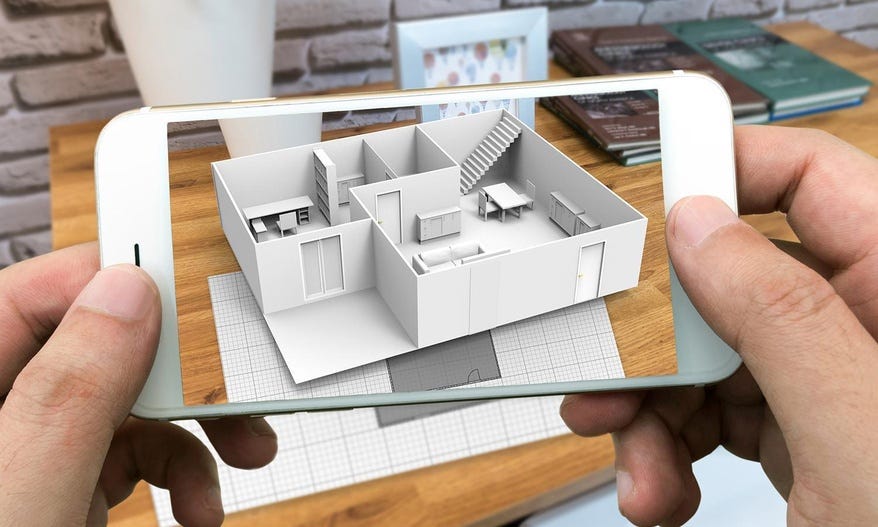The future of Information Architecture: Machine Learning, Voice User Interface and Augmented…
The future of Information Architecture: Machine Learning, Voice User Interface and Augmented Reality
Introduction
In the information age we live in, it’s more important that every organization working with data is conscious of Information Architecture (IA); that they plan ahead, plan carefully, and make sure that their content doesn’t turn into an unruly, illogical beast.
IA is the practice of organizing content in an effective way. IAs are in the websites we use, the apps and software we download, the printed materials we encounter, and even the physical places we spend time in.


UX designers practice IA everyday; the two are closely connected. Put simply, IA is an important skill within UX and other disciplines, such as content strategy, technical writing, library science and interaction design.
Every year, new trends emerge in technology, and information architecture is no different. In fact, over the past few years, interfaces have evolved to keep pace with innovation. As technology continues to provide new ways for people to consume content, information architects and website information planning tools must continue to create optimal ways to do so.
Machine Learning: The IA of AI
Machine learning is a method of data analysis that automates analytical model building. It is a branch of artificial intelligence based on the idea that systems can learn from data, identify patterns and make decisions with minimal human intervention.
AI requires machine learning, machine learning requires analytics, and analytics requires the right data and information architecture (IA). In other words, there is no AI without IA.


The entry points for AI vary from organization to organization. In some cases, companies jump directly to the top of the ladder and adopt established AI technologies for specific use cases. But in many others, organizations begin to build out their enterprise AI environment by getting their IA in order.
Organizations are in a never ending cycle of improving their digital means of engaging with customers. These initiatives include improving personalization of the user experience by presenting more relevant content; tuning search results to return exactly what the user is interested in; and improving the effectiveness of offers and promotions. Organizations might also strive to increase response rates to email communications; provide better customer self-service; increase participation in user communities and other social media venues; and generally enhance the product experience through various other online mechanisms.
IA in Voice User Interface
Generally, there are two ways of implementation for voice as input — voice first devices which has standalone hardware (e.g Amazon’s Alexa) and then screen first devices which has integrated software (e.g Siri).
Voice interfaces provide some great opportunities for designers, IA’s and users. It gives control back to the user by allowing them to use their own language as the input, rather than having to learn how to use a physical interface or having to touch a piece of glass in order to complete a task. It also can enable multitasking as there is no physical device to hold.
How we design voice interactions and conversations to facilitate the needs of users to complete tasks, find information and solve problems on a more intelligent level. The ingredient to make a design naturally conversational is understanding linguistics. In a conversational design interface, the focus is on building an interaction based on the way people speak, not how they write. A lot of voice interfaces are written in the way we write rather than the way we speak.


Next, start crafting a few sample dialogs for scenarios. A sample dialog is a script that shows a conversational flow between the system and the user. You can think of this as the VUI version of a wireframing process. A sample dialog can be something you show your client to get feedback before you start prototyping.
Designs for an Augmented Reality
With augmented reality, what is around us can now be factored into the content served to us. This technology is no longer novel as augmented reality is becoming more prevalent throughout the web. This means information architects must plan for a 2018 that includes both 2d and 3D environments.
Users are drawn to augmented reality because it makes navigating to relevant vocational information easy. For example, using this technology, anyone with a smartphone can discover content that is relevant to them. Whether it is a local restaurant, a nearby shared ride or even a bathroom, designers should be prepared to use data to predict intent as well as provide easy drill downs.


Designing for augmented reality involves spatial thinking and the prioritization of location-based data. Designers must also be prepared use movement to better understand the user experience.
While the need to design around this technology is to be expected, information architects should also focus on ensuring compatibility with current 2D architecture. The ability to create sites that are suitable for both 2D and 3D environments. Thinking about them separately just won’t work.
Conclusion
Information architecture is a core part of the powerful user experience design. Efficient IA helps users quickly and easily navigate through content and find everything they need without striking a blow. That’s why designers are recommended to learn the basics of the IA science. The topic of information architecture is wide and there are more interesting and useful aspects.
